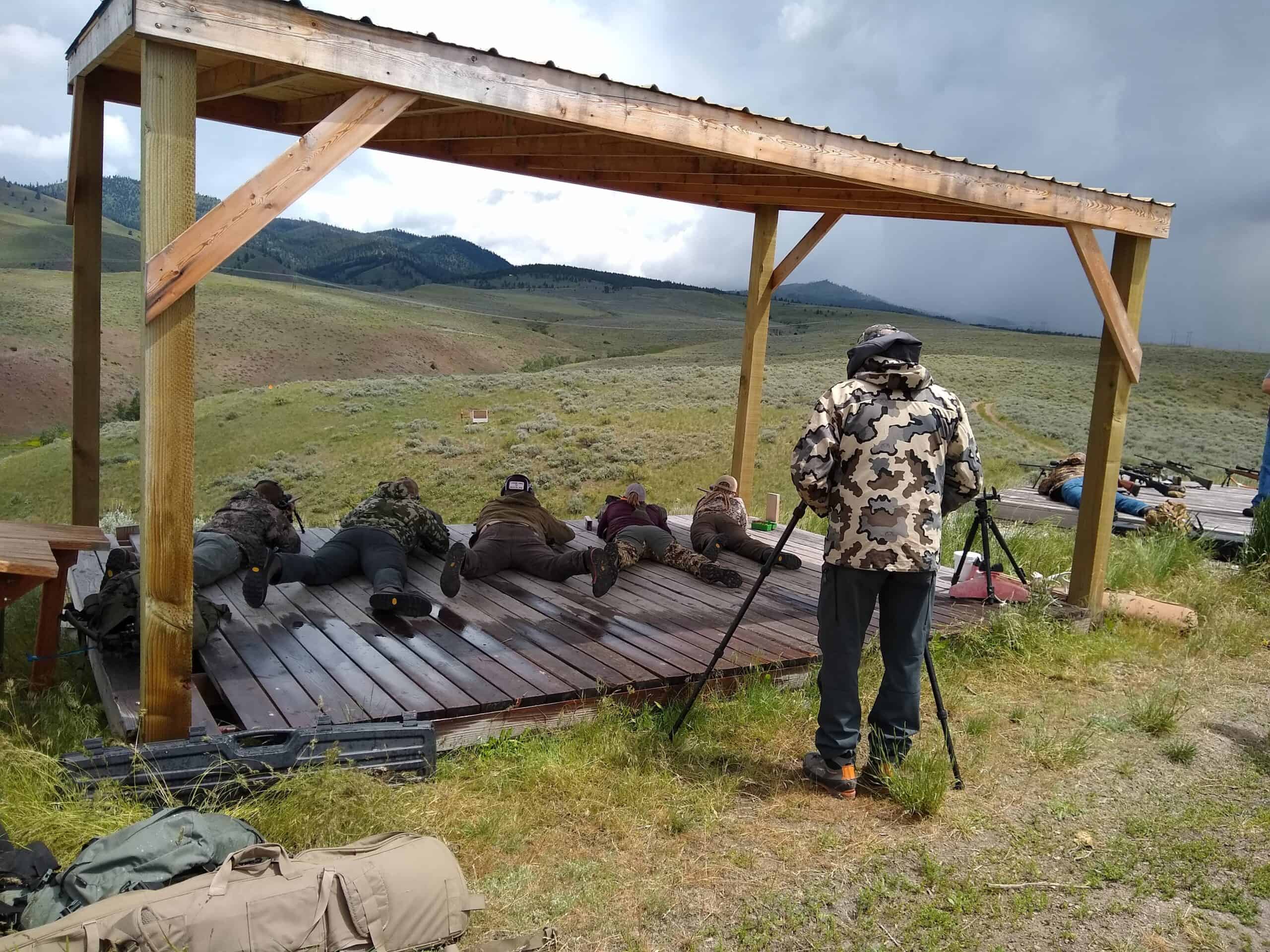3 Rifle Shooting Drills to Make You a Crack Shot in the Field
By PJ DelHomme
These drills will build confidence in your shooting ability for the price of a box of bullets and an hour at the range.

Shooting position in the field.
Shooting from a bench rest at a target has little in common with shooting at an animal in the field. Bench rests are great for sighting in a rifle, testing new loads, and practicing technique, but I’ve never seen a chair, bench, lead sled, and evenly spaced targets in the woods where I hunt. To make the most of your time at the range, consider shooting from actual field positions such as prone, off-hand, and kneeling. Learning how to accurately hit your target from these positions is an exercise in humility.
I borrowed the following techniques from different shooting schools where the focus was on shooting in the field, not from a bench. Emphasis was also placed on understanding your effective range, which is the maximum distance at which you can ethically kill an animal. Hitting steel from 1,000 yards is awesome. But that steel isn’t going to move a couple of inches at the last minute. Steel isn’t going to make your hands shake and your heart pound because all you can see are antlers. To help determine your effective range, there are Effective Range Targets made exactly for this. These American-made targets are designed to help you understand your capabilities (or lack thereof). When shooting from field positions at the range, I like to use these targets as a subtle reminder of my limitations.

Lined up in shooting class.
Drill 1: Build Your Nest
Shooting from the bench with a nice lead sled should be steady and comfortable. The sight picture in your scope should be on target even when you don’t have your cheek to the comb. You want to transfer this steady, comfortable shooting position into a field position by “building your nest.” For example, when you’re on a ridge and you spot a mule deer 300 yards across the draw, your steadiest shot is going to be prone, laying on your stomach. Using only what you have in the field, you then need to build a stable shooting platform or nest.
Start with the front of the rifle. Do you have a bipod? How about a log to drape the stock’s forend over? You can use your pack, too. Use what you have left, like a jacket, first-aid kit, whatever, to shove up underneath your chest and rifle butt to build that foundation. Your goal is to emulate that rock-steady shooting platform from the range. If you can draw a bead on the animal of your dreams without watching the crosshairs dance, then you’ve built your nest properly. Once you’re set, don’t rack in a cartridge. Dry fire first. Seriously.

Using a pack to build a nest.
Drill 2: The Art of the Dry Fire
Robert Hanneman is a Hunt Adviser for Huntin’ Fool, a Montana firefighter, and a hunting guide to his three boys. He’s also guided hunters in Alaska. His job is to find animals and help his clients kill them, which means he sometimes takes away their bullets. “When I guided some clients, and they saw a good animal, I would watch them lose their minds,” he says. “I would unload their gun and have them dry fire it a few times to calm down.”
Dry firing your weapon is the art of settling your nerves—it’s everything but the bang. Don’t be afraid to dry fire your rifle in the field and at the range. Once you’ve built your nest, relax your breathing. Most times, you can watch the target rise and fall in the reticle as you calm down. When it finally settles, click. Dry firing a bolt action rifle does not harm the firing pin, but if you don’t believe me, you can use snap caps, which are just inert cartridges.
Drill 3: The Pushup Test
This final drill should be combined with your newfound nest-building and dry-firing skills. Also, this drill is best performed when the range isn’t terribly crowded because it might look a bit odd to your shooting bay neighbors.
I call this the pushup test because I like to do a dozen push-ups before I settle in behind the rifle. You can also do burpees or jumping jacks. The point is to get your heart rate up to simulate running up a hill to get into a shooting position or dealing with a bad case of buck fever. When your breathing and heart rate are elevated, the sight picture of your target is likely bouncing around until you can get it under control. This is where patience, conditioning, and controlled breathing settle things down. Think of athletes in the winter biathlon. Their sport is based upon their ability to ski really fast, then slow down their heart rate long enough to make accurate shots with a rifle. And then ski really fast again.
Try doing pushups with your pack on. Then build yourself a nest (shooting position), and dry fire. When you’re ready, use an Effective Range Target and see what happens with a live round. If you’re like me, there’s plenty of room for improvement. Then again, isn’t that the point of practice?There are plenty more shooting drills out there, and maybe you prefer one over any of these. If so, we’d love to hear how you take it from the range to the field. Drop us a line at [email protected].
Related Articles & Videos
Watch Video. Then subscribe to the USA’s YouTube channel to get notified when new videos are available.
Ballistic Calculators and Hunting – Union Sportsmen’s Alliance








